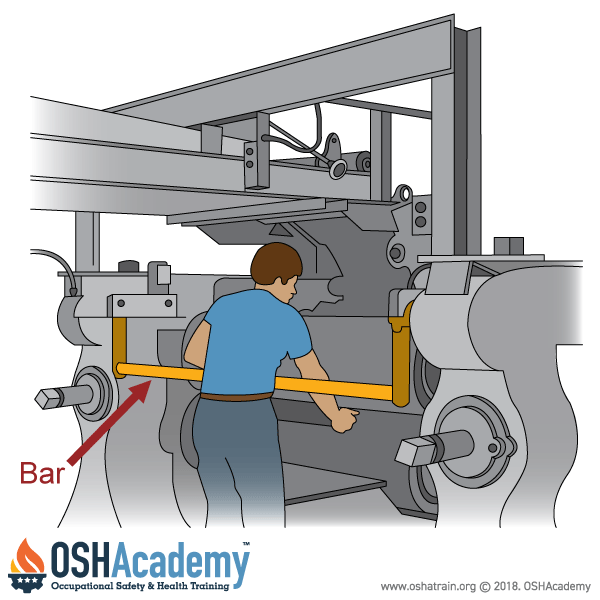Safety Trip Controls
Safety trip controls provide a quick means for deactivating the machine in an emergency situation.
Key Features of Safety-Trip Control Devices
The key features of safety-trip devices include the following:
- A pressure-sensitive body bar, when depressed, will deactivate the machine.
- If the operator or anyone trips, loses balance, or is drawn toward the machine, applying pressure to the bar will stop the operation.
The positioning of the bar, therefore, is critical. It must stop the machine before a part of the employee's body reaches the danger area. The figure here shows a pressure-sensitive body bar located on the front of a rubber mill.
ExampleRubber Mill Pressure Bar: On large rubber mills, a pressure-sensitive body bar is mounted horizontally across the front of the machine. A worker feeding raw rubber into the rotating rollers loses balance and begins to fall forward. The worker's body presses against the bar, which immediately stops the rollers, preventing entanglement.
This example emphasizes the need to regularly inspect and test the trip bar to ensure it is functioning properly and is positioned within the correct activation range.
| Safeguarding Action | Advantages | Limitations |
|
Stops machine when tripped |
Simplicity of use |
All controls must be manually activated May be difficult to activate controls because of their location Only protects the operator May require special fixtures to hold work May require a machine brake |
Knowledge Check Choose the best answer for the question.
3-6. Which one of the following safeguard devices provides a quick means for deactivating the machine in an emergency situation?
You forgot to answer the question!

